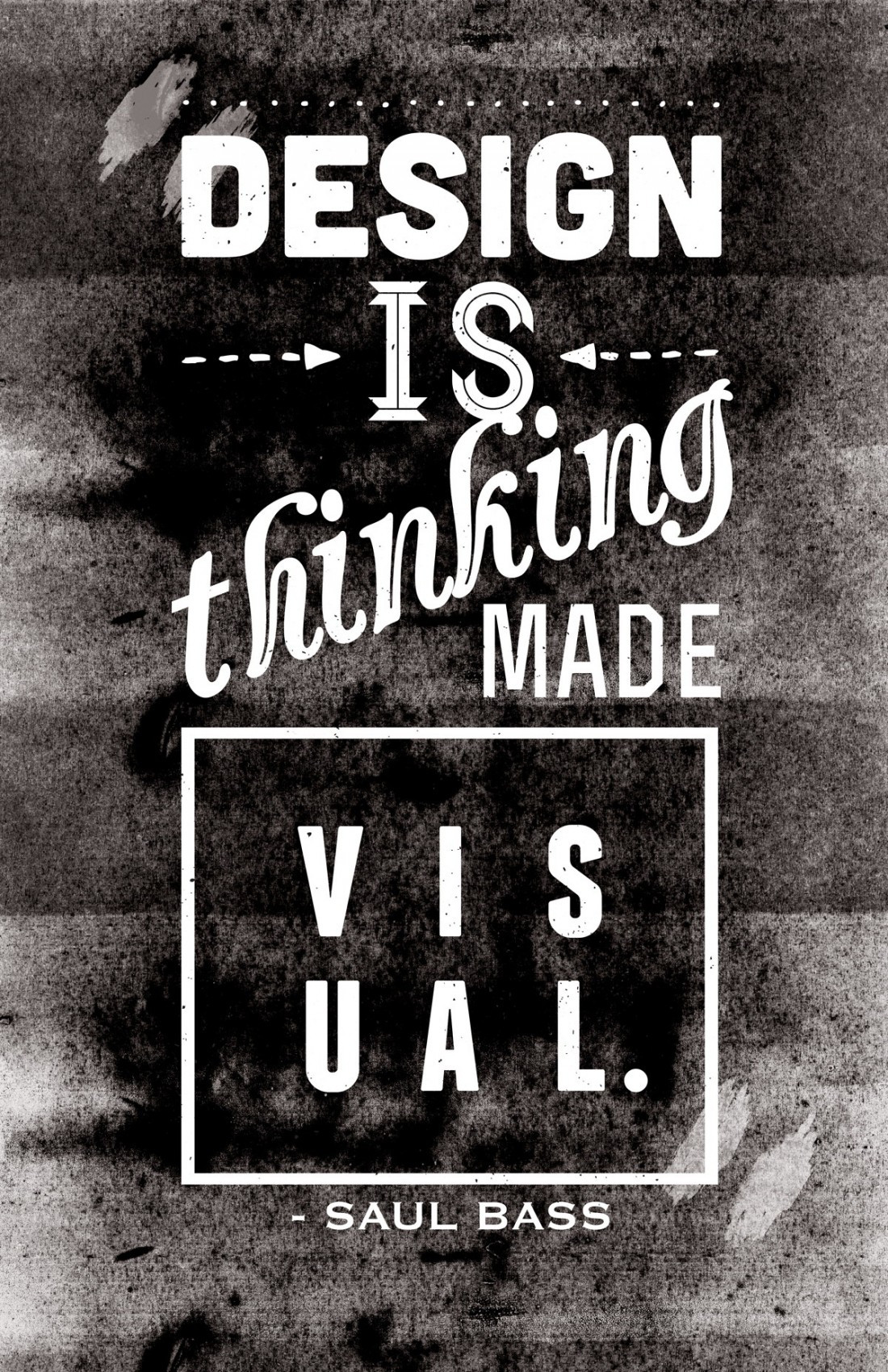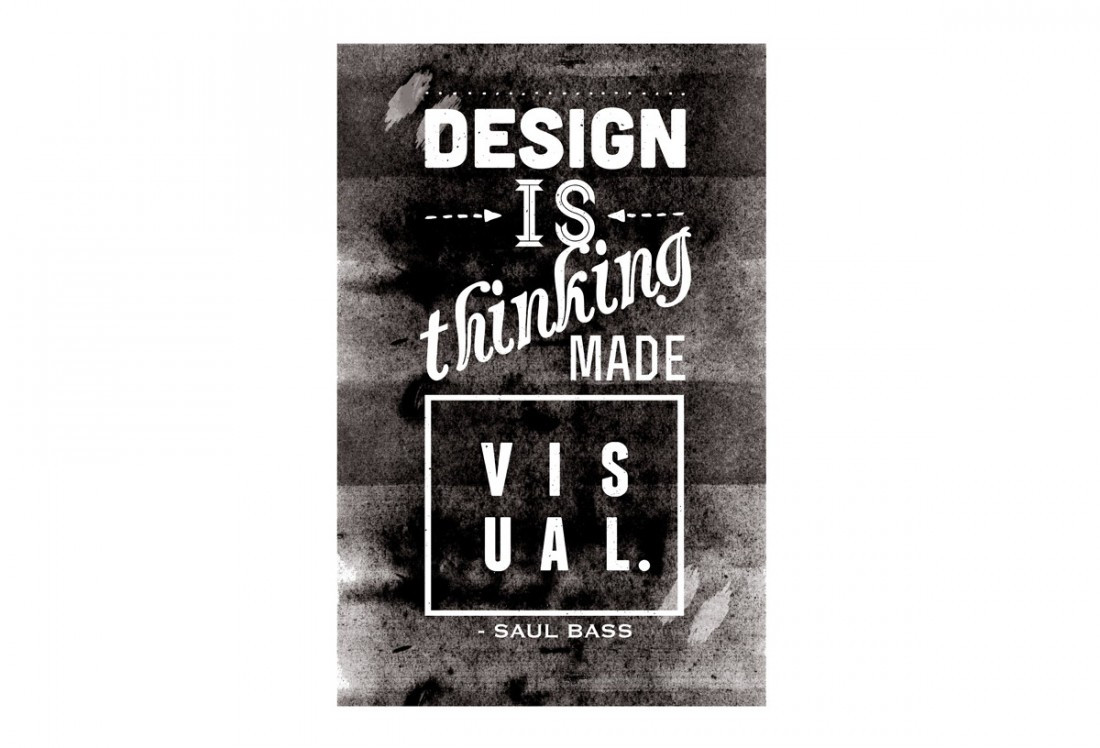Winnipeg Is: DERIVATIVE DESIGN?
On criticism and compromise in graphic design
Nils Vik almost found himself in some hot water a few weeks ago over a quote pulled from a recent article in The Uniter. The article was highlighting Urban Ink’s Dix Ans D’Affiches, currently showing at Parlour Coffee. The quote was circulated through Twitter via the Graphic Design Council of Canada, Manitoba Chapter.
@GDCMB: “Would you agree with @nilsvik that ‘most graphic design firms are just rubbish in Winnipeg’?”
When Vik, a former EQ3 furniture designer, is not at Parlour Coffee or Little Sister Coffee Maker, there’s a good chance he’s at the University of Manitoba Faculty of Architecture. He is a studio critic, and is not shy to dole out criticism for the sake of the design process. In fact, he views it as absolutely integral to producing sound work.
“I think ideally the best work would come from someone who is open to criticism. But at the same time able to separate when criticism is towards the work versus the person,” Vik says.
The conversation that @GDCMB’s tweet spurred was productive, and is best summed up by the following tweet, one that seems to align with the ethos Vik subscribes to.
“Context or not, it’s truth; most of any arts/culture sector is rubbish. Film, music, design. It’s why we celebrate the good,” Jeope Wolfe tweets.
Graphic designers must straddle customer service and creativity. They refer to their creations as products: brand identities, graphic materials, websites. Function is their primary concern. So why call any of it rubbish?

John Lyttle, designer for Lester Communications and communications chair at GDCMB, says, “We need to be told that what we’re doing is rubbish so that we can improve the work we’re doing.”
Most of society interacts with finished branding on a daily basis, but the finer points of design are important to the community that produces these products. Graphic designers are creative people. They are drawn to the profession by their desire to express themselves creatively, coupled with their understanding that a warm bed and a full belly do not materialize in the ether of Adobe Creative Suite.
There is a consensus among designers on what separates the functional from the unique, the interesting, and the moving. Jadyn Klassen, a freelance graphic designer out of #TGFS, explains.
“I think what it comes down to is… if you can see that there’s soul in it,” Klassen says.
By this, he means remarkable design is that which halts your gaze (and your incessantly clicking thumb), and makes you appreciate its visage, not how it relays information to you. There is, however, one small caveat.
“When a designer or maker gets married to their project or work, there’s a danger in that they become defensive of it because it’s an extension of themselves,” Vik says.
What’s the way around this issue? Klassen attributes his exposure to criticism during classes at Red River College that helped him to separate his soul from the work.
Put your soul into your work, yet separate your soul from your work? Sounds complicated.
The issue compounds in the studio/firm setting. As Melissa Krawetz, senior graphic designer at Honest Agency explains, compromise is an inevitability.
“I feel like there’s always compromise in one form or another, it can seem like an ever-changing landscape of compromise. You are always taking into consideration time, money, creative input from others on the team, production schedules, client feedback, or design that has already [been] established.”
Krawetz goes a layer deeper, noting that compromise itself is a creative process.
“I suppose it’s compromise, but it’s really constant problem solving and that’s the nature of design.”
Sometimes compromise enters the professional landscape before a designer is in front of their computer. “There are compromises you have to make as a professional. You don’t always get the exact job that you want,” Lyttle says.
If designers find themselves in this position, and are unable to do work that tickles their creative fancy? A simple solution:
“I think you just, you do it. For free. Realistically, you need a portfolio, right? If no one’s hiring you to do innovative work, you make innovative work on your own and show it,” Vik says.
“Artists are a prime example. They make work. For themselves, right? No one’s paying an artist, a lot of the time anyways, to make work. So if you want to show that you can make great work, you just make it. Go ahead and make it.”
Having created brand identities for many of his friends’ prominent new business ventures - Thom Bargen, Wilder Goods, and forthcoming Commonwealth Manufacturing - Klassen echoes Vik: “You need to just get your work out there and have people see it.”
Some of the aforementioned work was done on trades, and while not being for free, Klassen relayed that the exposure resulting from these bodies of work - as well as that which came from multiple art exhibitions - has paid dividends a paycheque cannot.
And if you don’t feel you should do any work for free? Klassen is open to your ideas. In his own words:
“Just because you’ve left school doesn’t mean that you shouldn’t still be a student, and that you shouldn’t still be learning and growing.”
Part of the series: The Urban Issue 2015
Published in Volume 69, Number 26 of The Uniter (March 25, 2015)







